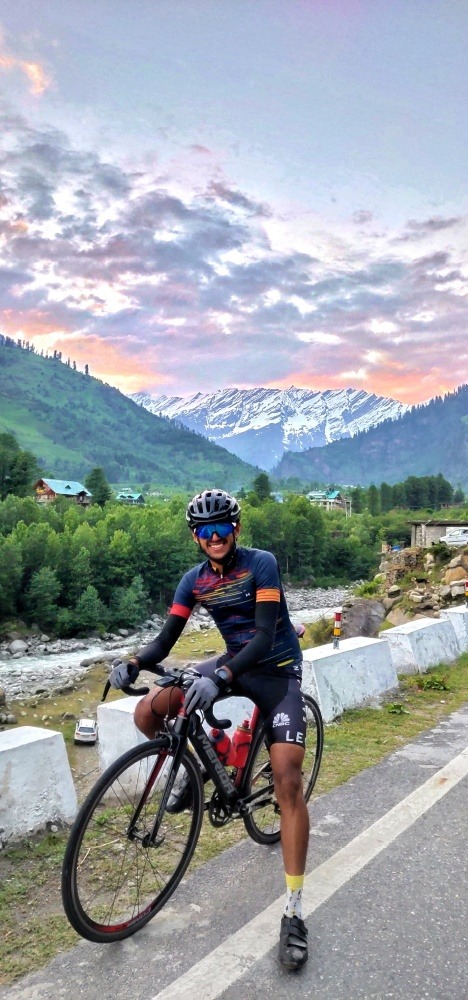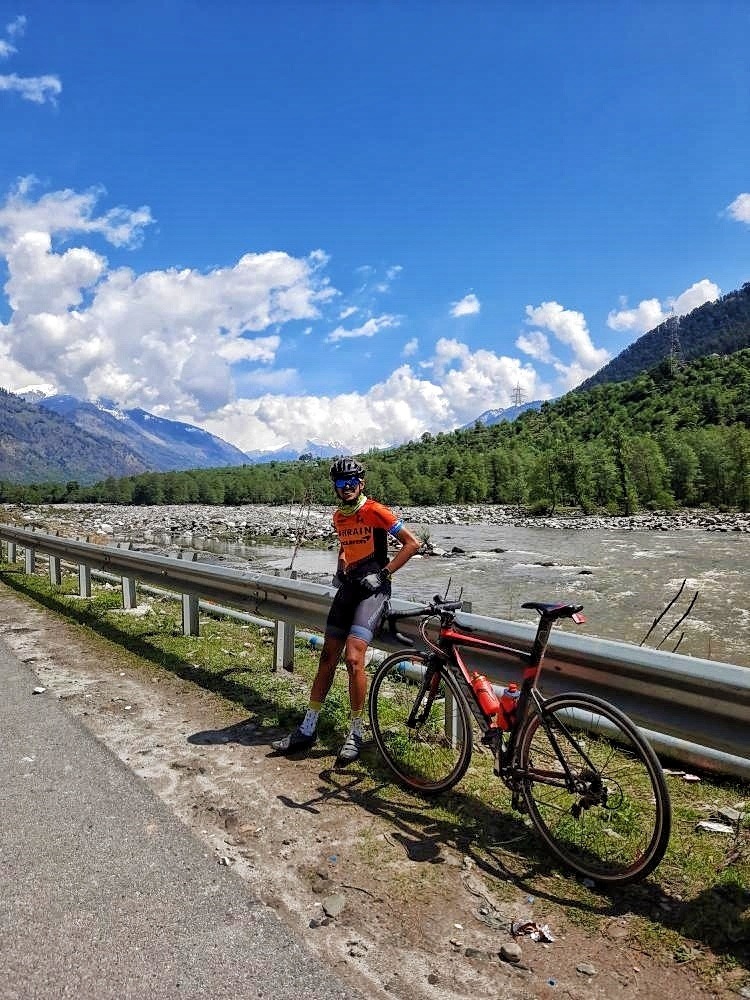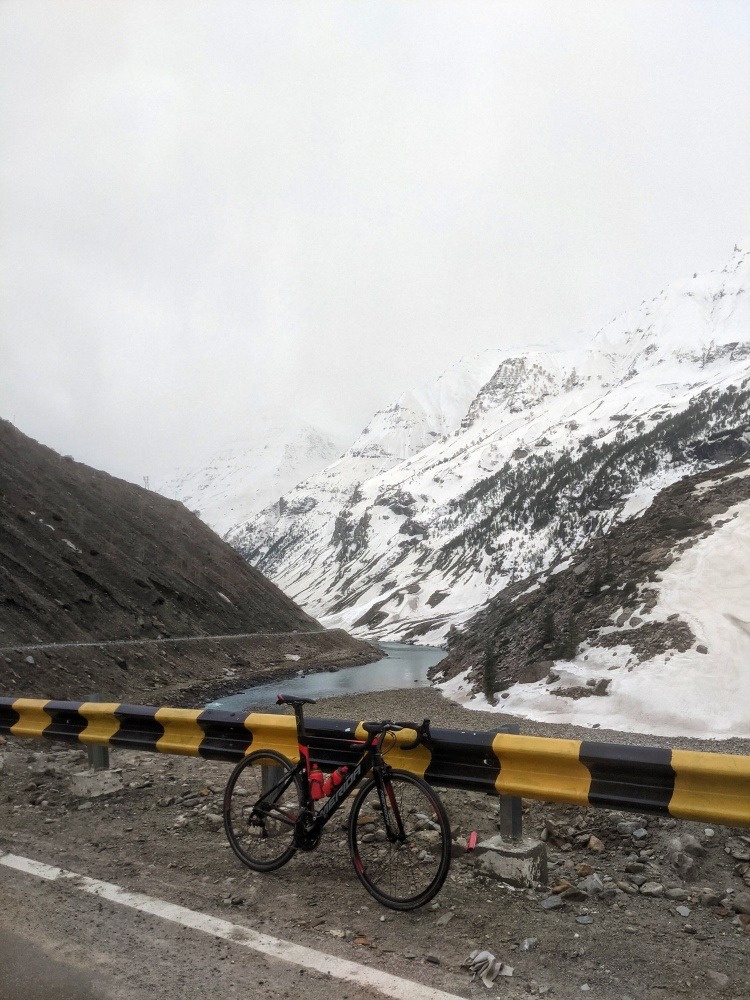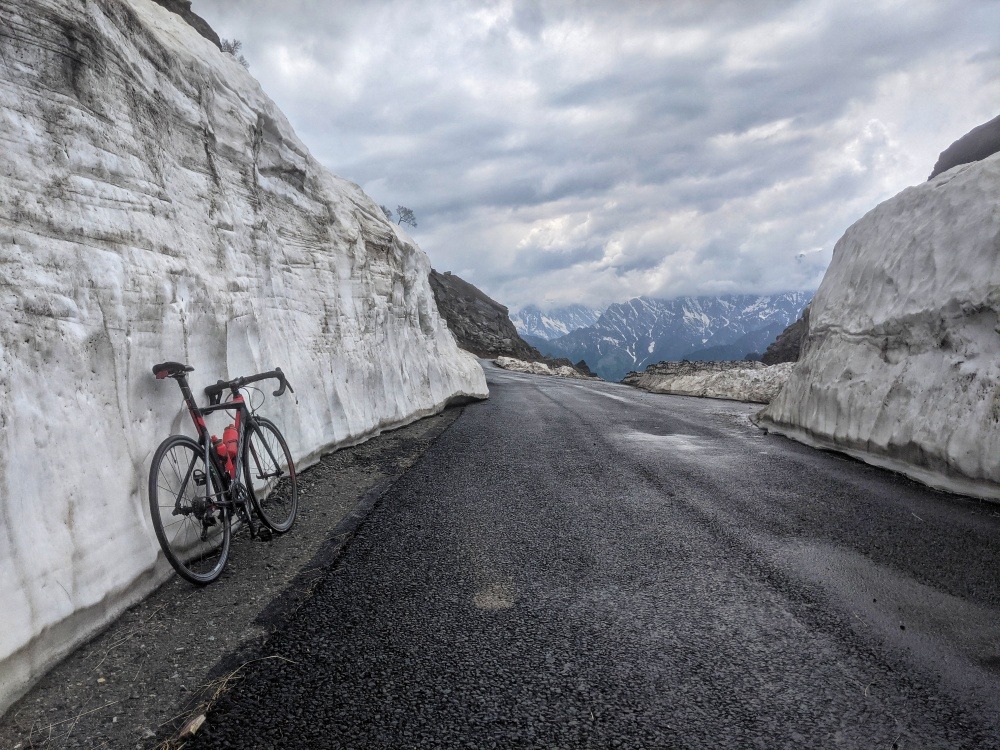We go High Altitude Training in Manali with Ashley Moras. He took a 3 month work’ation’ in Manali to improve himself as a road racer, all while ‘attending’ office everyday…
Meet Ashley Moras, a road racer, who has made a passion into his profession. As he works in the Indian cycling industry. Ashley works for a company called, Extreme Adventure Sports, which is the Indian distributor for Merida, Polygon, Garmin, Elite, Tacx and Vittoria among others.
Being deeply embedded in the cycling scene, he chose the gorgeous mountain town of Manali in Himachal Pradesh, as his home for three months. We chat with Ashley, to know how, why and what did he get up to in the Himalayas!
But what is Altitude Training?
At altitudes of 1500 metres and above, there is considerably less oxygen available than that at sea level. Your body is forced to acclimatize to this reduced oxygen availability. As the body acclimatises, it starts producing more Red Blood Cells (RBC). The result is that the blood can carry more oxygen from the lungs to the muscles. Which results in better performance.
When you descend from these high altitudes, your body continues producing excess RBCs, which boosts your performance in the races down there. But this gain isn’t everlasting, it lasts for anywhere between 2 to 4 weeks. If you are training for a specific event, then you need to time your mountain excursion perfectly!
This was Ashley’s first foray into the world of altitude training and here’s his experience.
Why Manali
Ashley chose Manali, because he races for the Himachal Pradesh team in the Road Racing Nationals. This, even though he lives in Ahmedabad. Manali is also home to many friends and he could count on them for support in arranging things.
Proximity to Delhi and Chandigarh was another factor. Getting spares or anything else was easier than a more remote section of the Himalayas. Leh, was another option, but Manali was relatively more familiar ground.
Another important reason for choosing Manali, was that summer is incredibly hot in Gujarat. Training becomes difficult with the soaring mercury. The hills are a refuge at such times.
Logistics of Altitude Training in Manali and Living in the Hills
First thing, you need to do is to find a place to stay. If you are going for a long time, you need to find a place which is affordable and at a good location. You don’t want a remote location, away from basic amenities. So in case of an emergency you can get help.
Find something which is semi-furnished or fully furnished. Not for a lavish lifestyle, but the bare minimum. Ashley had a kitchen so that he could cook breakfast. That helps save money. Once in a while he would even cook lunch and dinner. But mostly he would eat lunch and dinner at a dhaba, where they would cook fresh homemade food. Such places you find with trial and error. If you have local friends, ask them.
At these dhabas tell them that you will be staying for a long time and eating everyday. They will reduce the overall cost. There again you end up saving money.
Connectivity is a big challenge. Especially with remote working. Ashley was living in an individual room, so there was no internet facility.
He had to make use of the phone’s data pack. What he did was take a month’s data pack with 4G speed, because it is required. He would use it to stream YouTube, as well internet for work or Zwift. If you get a place with WiFi then even better. Important for people with work which requires extensive and uninterrupted use of the internet.
You will also need to wash your own clothes and other regular household chores. As Ashley says, if you are rich, then you can use a laundry service. But chances are high, that if you are an athlete, you aren’t going to be rich!
Trials and Travails of Working from Manali
Ashley didn’t face any issues with his work, while living in Manali. It was all smooth sailing once he planned out his work during the day.
The only issue he faced were power cuts. There would be power cuts multiple times during the week, but not for long durations.
Luckily for Ashley, most of his work happens over the laptop and phone. He doesn’t need to meet people. That helped, plus due to the lockdown everything was shut across India. As such the first 2 months were easy.
When the lockdown opened, then he had to manage his time more discerningly and had to set hours aside for work. Balancing work and the training he was there for.
Sometimes when he had to train, he would have to attend calls. Work is important and doesn’t happen in the timeframe of your choice.
It was constantly juggling between important work and training sessions. With a little bit of experimentation you can see what works best for you. For Ashley it was training in the evenings. Morning sessions were utilised in completing work.
How Does Mountain Climbing Translate to Flat Road Racing?
Gujarat is completely flat. Manali on the other hand is a good place to practice climbing. But for Ashley, climbing was not the only target. The main target was to build an aerobic base.
Obviously, it won’t translate massively in a flat course because the group of muscles used for climbing and flat races are different. But as Ashley says, “my aerobic capacity would have increased, my raw power generating capacity would have increased. That will definitely benefit me on flat courses.”
He adds, “because I have done a lot of hill training. I will target races which have a lot of climbing. Seeing the calendar of this year, I feel there might be some climbing races which would come up within a span of couple of months in Pune or Bangalore. I am hopeful for that.“
Challenges of Altitude Training in Manali
The biggest challenge that Ashley faced in Manali was the cold. Going from a super hot Gujarat to Manali, the summer there was like winter of Ahmedabad. One day it even snowed in summer! The temperature dipped below zero. Two months the cold was severe. Only towards the end of May and June that temperatures went up. But the rest of the time it was cold.
Another challenge was that it would rain anytime. The weather in Manali is unpredictable. It can be nice and sunny in the day and it can pour heavily in the afternoon. In the 3 months that Ashley was there, 50% of the days he got rain.
The third challenge was that Manali being a hilly region, getting road bike parts was tough.
Luckily Ashley works in the cycling industry. So sourcing parts is easy. He would ask someone to send it via a dealer. But for others who don’t have that luxury, it would be difficult. There was an instance where he broke a spoke and there was no road bike spoke available anywhere in Manali. There are 4-5 dealers in Manali and none of them had a road bike spoke. All of them are well equipped with MTB spares but none with road bike spares.
This is a major point to consider for anyone planning something similar. You might not get spares specific to your needs. So carry spares or else your training might suffer.
Since Ashley had planned a 3 month visit, he carried along his indoor trainer. He got it delivered to Manali via courier. So that he didn’t miss training even if the weather was horrendous.
Roads around Manali are by and large good, so you wont have an issue with punctures. Except when you get unlucky. Ashley had quite the experience with 5 punctures in 24 hours.
Do It Again. Do It Better
This is what Ashley says he would do differently if he were to do a Manali training trip again.
“Honestly, I would not do a Manali trip again. I would next time go to Leh. Because that is at a much higher altitude and more challenging. And from what I have heard, the weather is better there. It can be extremely cold but less rain.
If I were to go to Manali again, I would know the rates. I can bargain more, know where to eat, and carry spares to be on the safer side. Also I would try to explore places which I missed out. I would find places which are slightly more affordable.“
Road Biking Routes Around Manali
As a road cyclist from Manali, Ashley would go all the way to Kullu and back. That is a gradual climb and descent. If you want a full blown climb, then you can go towards Solang Valley and Atal Tunnel. You can cross the Atal Tunnel and you are at 3000 metres. You can go on to Sissu and Keylong.
If you are training in Manali the best route is towards Atal Tunnel or Solang Valley depending on your workout. The other option would be to go towards Rohtang Pass. Going in that direction everyday is not advisable because the weather is unpredictable. Even compared to Manali it is different. The roads are not that great. Up to Marhi the roads are fine, but after that it isn’t great. If you want more elevation gain in shorter distance take the old Rohtang road towards Gulaba.
If you want equally difficult terrain but you want to ride more distance, that would be Solang. Till 3000 metres there might be an elevation gain of 1800 metres, not more. Post 3000 metres, your elevation gain becomes gradual. It is not steep. Same is the case from Gulaba. After Gulaba the gradient is easier. Long climbs but gradual.
If you are a mountain biker, you can go to multiple trails that are around. You could go towards Rohtang, there are multiple trails there. You can go to Kanihal trail which is just behind Manali. If you are a beginner and just want to learn how to do trail biking, there’s a nature park inside Manali, where you can just hang out. It is a small park, so you can practice your skills there. There are amazing and dangerous routes if you cross Atal Tunnel, in Sissu, Tandi and Keylong. The place has amazing trails for mountain bikers.
For road bikers there are 3-4 routes which you need to stick to.
Hanging Out… When Off The Bike
All that training and working means you will become a dull boy or girl. You need to relax and chill as well every once in a while. To kick your bibs off and relax and just take in the mountains.
There are some amazing places in Solang Valley. Where you can relax and enjoy the weather. Go there for a picnic. There are secluded waterfalls towards Kullu. Or you can sit by the riverside. You can go trekking behind Kanihal trails.
There was a lockdown in Manali when Ashley was there. So no nightlife unfortunately. But when things open up you can go to Old Manali. There are multiple cafes’ and live music sessions. All the hostels are also there.
Who Should go Altitude Training in Manali?
Altitude training is not for everyone. Altitude training is for those who are racing at a certain level. Maybe a national or international level. For those who want to see significant improvement in their races.
It only makes sense for those athletes who are dedicated towards their sport. Who are training properly towards a goal.
For such athletes Ashley recommends a high altitude camp. For people who are targeting nationals or any big races, do this prior to your races. It will help a lot. You will not feel the effects there. You might find minor increments there, but the major increments will show once you return to your base.
For a layman, a weekend warrior, there is no use of altitude training. Just go there and enjoy the ride and be happy…
Thanks to Ashley Moras for sharing his experience of Altitude Training in Manali with us.
Photos: Ashley Moras
If you liked this article, check our starters Guide to Indoor Training and a recently held Grey Ghost MTB Race in Keylong.












Interesting to know about the physiological changes in RBC at high altitudes. Is that why they all have pink cheeks 😘